- Loaded with standard equipment
- Sublime interior quality and practicality
- Handles and drives well for an SUV, while being fairly economical
- The road sign recognition system is beyond irritating
- Push button transmission isn't intuitive
- Ummmm....
Australians have no shortage of options when it comes to buying a brand new SUV, with new sizes, segments and options seemingly popping up al the time. For a long time, getting an SUV larger than a standard seven-seater family SUV meant shelling out for an expensive off roading focused 4WD vehicle like a Nissan Patrol or Toyota Land-cruiser – but no more! The Hyundai Palisade debuted in Australia in late 2020, offering a larger SUV offering without an off-roading focus. Is the 2023 Hyundai Palisade Highlander diesel AWD worth consideration? Let’s find out.

The Palisade range received a model year 2023 mid-life facelift towards the end of 2022 and we were keen to see the changes in person, so we spent a week behind the wheel of a 2023 Hyundai Palisade Highlander CRDi eight-seater. Having previously tested Palisades with the thirsty V6 engine, the promise of lower fuel usage in the diesel was also something we wanted to put to the test. Read on to find if the Palisade is the eight-seater SUV that’s worthy of your money.
Price & Equipment: 9/10
The 2023 Hyundai Palisade is offered in two grades – ‘base’ Elite and top-spec Highlander, and both models are available in a choice of seven or eight seater options – the former with two captains chairs in the middle row, the latter swapping the captains chairs with a three seater bench. The range starts with the Elite 2WD V6 petrol, at a recommended retail price (RRP) of $65,900, or around $72,000 drive away, and tops out with our test car – the Highlander eight-seat Diesel AWD with the navy/grey Nappa leather interior and premium paint at a RRP of $78,737 or around $87,600 drive away.

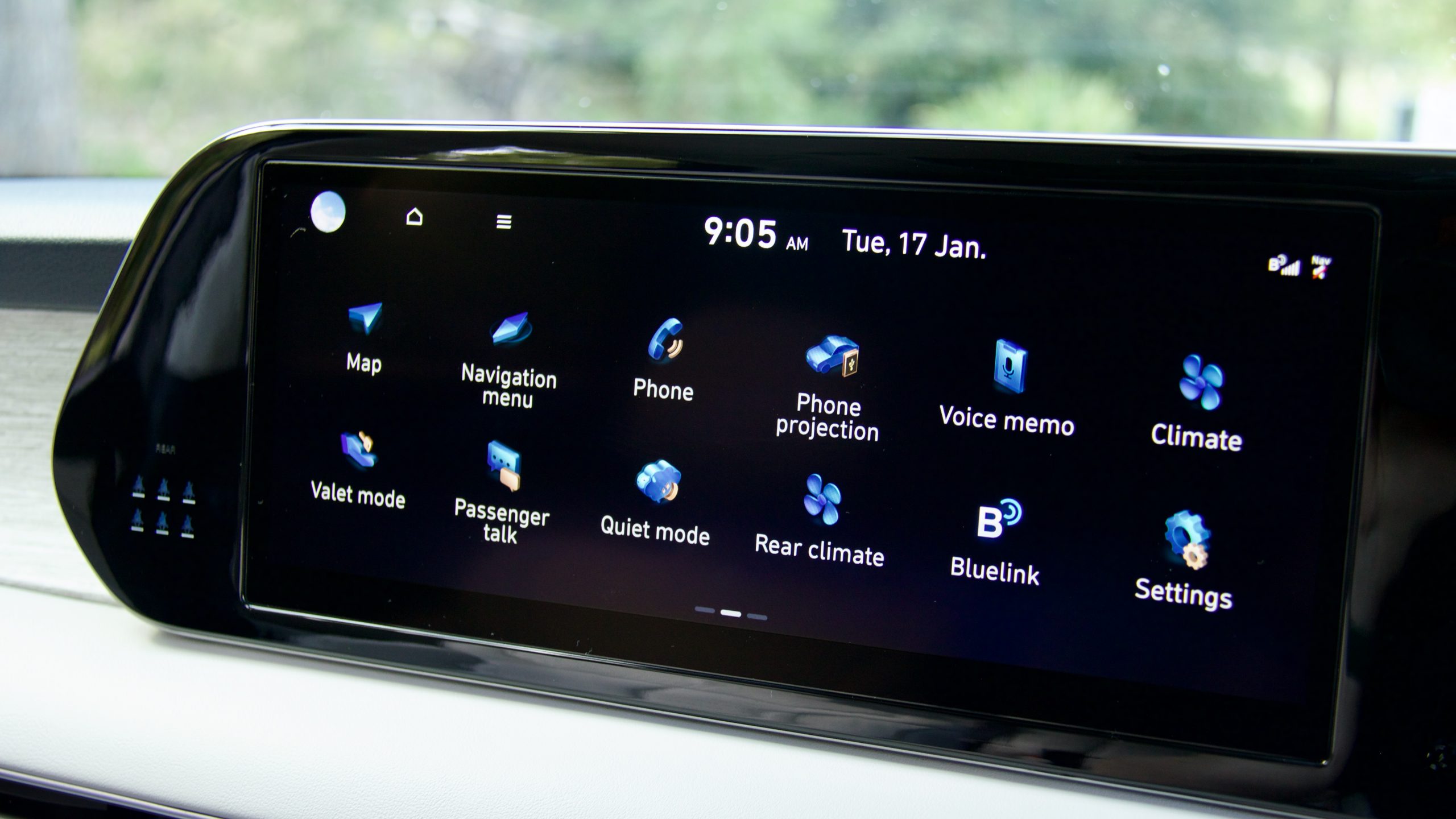

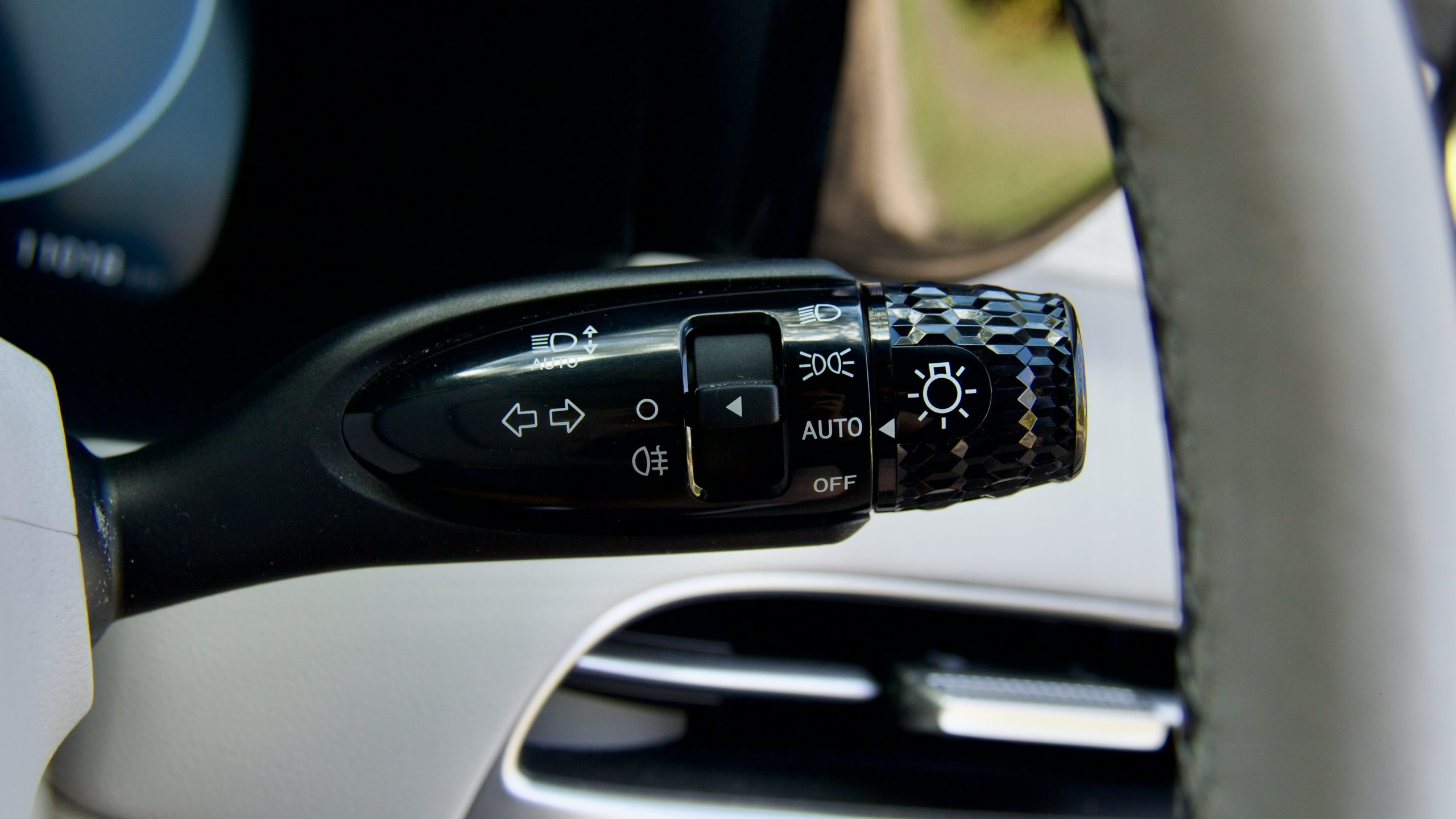
The equipment list is extensive, and includes dusk-sensing automatic LED headlights, keyless entry and start, remote start, remote forward and reverse parking via the remote fob, auto wipers, paddle shifters, Nappa leather upholstery, a 12-ways power adjustable driver’s seat with memory, an eight-way power adjustable front passenger seat, heated and ventilated front row and outboard second row seats, tri-zone climate control, a heated leather steering wheel, a front sunroof and fixed rear glass roof, an auto-dimming digital rear mirror, heated and auto-folding mirrors, a hands-free power tailgate, a 12.3-inch digital instrument cluster, a 10-inch heads-up-display, a 12.3-inch touchscreen with wired Apple CarPlay and Android Auto, AM/FM/DAB+ radio, satellite navigation and a Infinity 12 speaker sound system, seven USB C points, a wireless charger, remote smartphone app controlled functions including climate control, engine start and window opening.
The Palisade was upgraded to a five star ANCAP rating as a result of safety feature additions and revisions as part of the 2022 facelift, and carries a long list of safety equipment including: seven airbags (dual front, front centre, dual front side and curtain airbags with coverage for all three rows), auto emergency braking with car, pedestrian and cyclist detection, blind-spot monitoring and collision avoidance, a blind-spot monitor, lane follow and keeping assistance, front and rear cross traffic alert with collision advance, safe exit assistance, rear auto braking, adaptive cruise control, automatic high beam, driver attention monitoring, parallel parking exit collision avoidance, a 360-degree camera, a reversing camera with dynamic guidelines and ground light projection, tyre pressure monitoring, an alarm and an emergency SOS call button along with automatic collision notification through the data communication module.


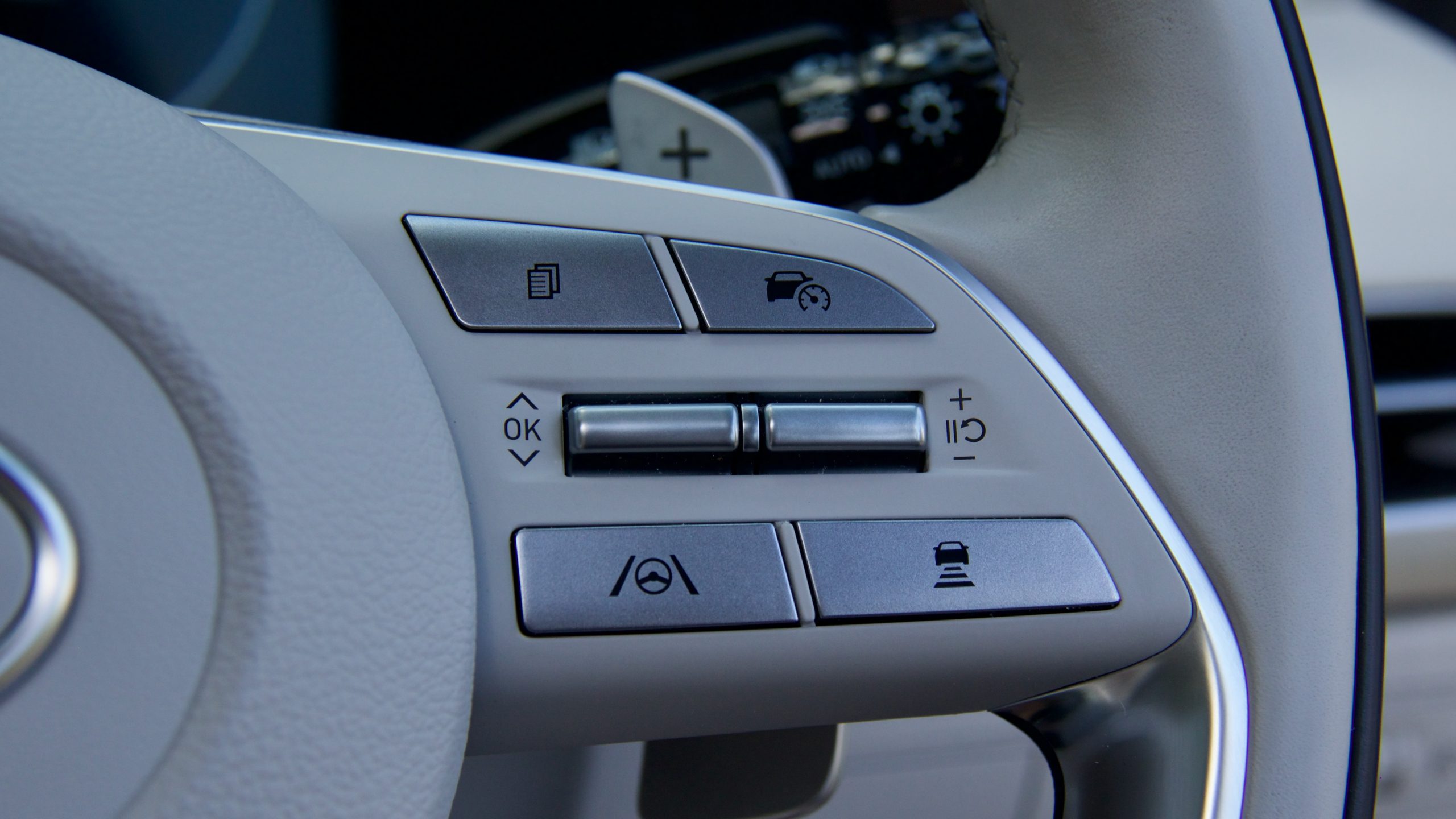

Options for the Palisade Highlander include the eight-seat option that our test car had, which replaces the two captain’s chairs in the second row with a three-seater bench, in addition to interior and exterior colour options. The interior is offered in a dark colour scheme with ‘Black Nappa Leather’ and a light colour scheme with the ‘Navy/Warm Grey Nappa Leather’ option, which our test car was optioned with. Both interior colour schemes are no cost options. Exterior colours include one no cost option: ‘Creamy White’, with the premium colours including ‘Abyss Black’, ‘Gaia Brown’, ‘Graphite Grey’, ‘Olivine Grey’, ‘Robust Emerald’, ‘Shimmering Silver’, ‘Sierra Burgundy’ and the ‘Moonlight Blue’ that our test car was finished in all attracting a $695 premium.
The Palisade competes against a number of other large SUVs of varying sizes and seating capacities, including the Nissan Pathfinder, Nissan Patrol, Toyota Prado, Toyota Kluger, Kia Sorento, Jeep Grand Cherokee L, Mazda CX-90, Volvo XC90 and Ford Everest. We think the closest competitors to the Palisade Highlander CRDi are the Jeep Grand Cherokee L Night Eagle and the Nissan Pathfinder Ti-L.
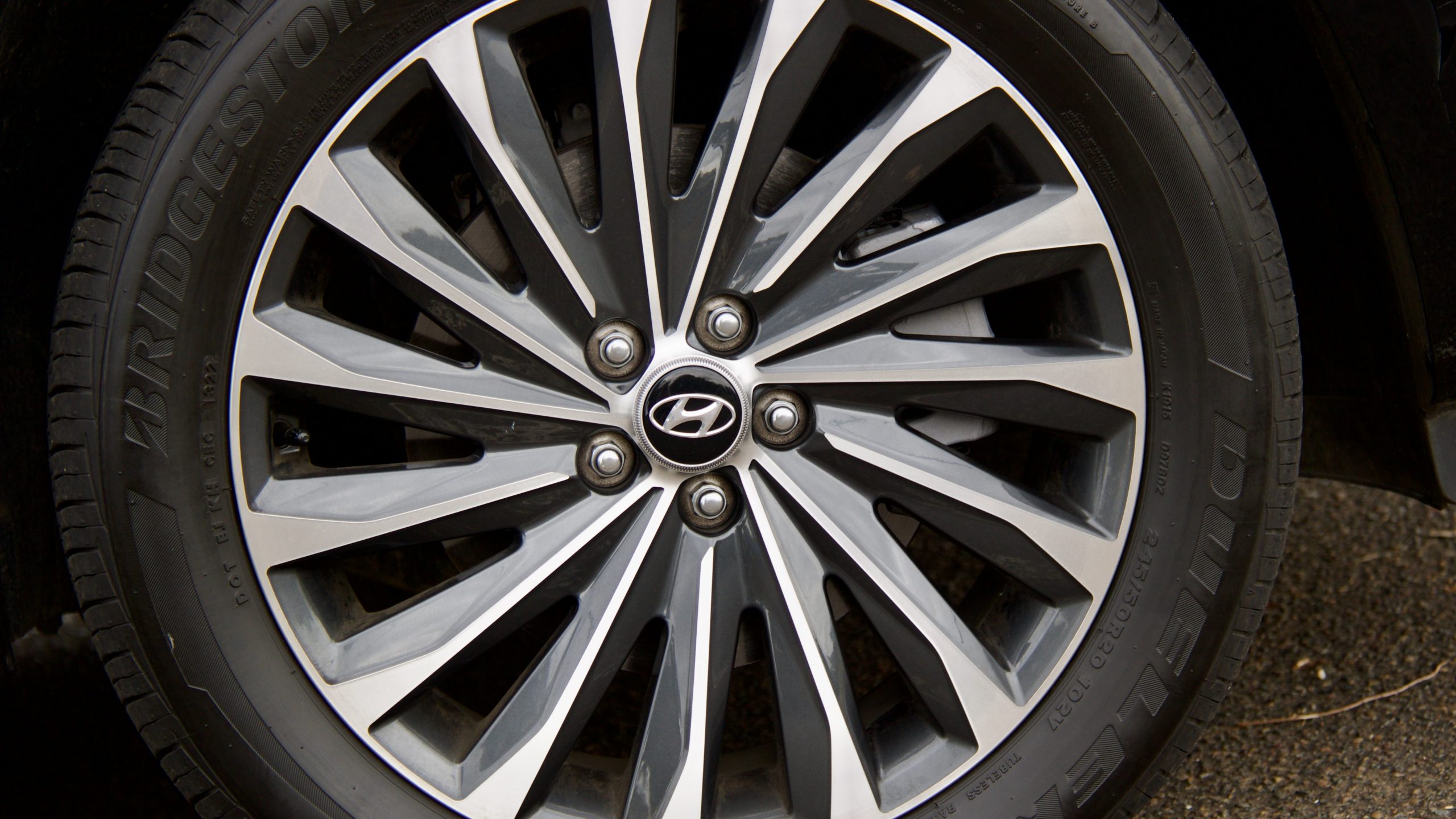
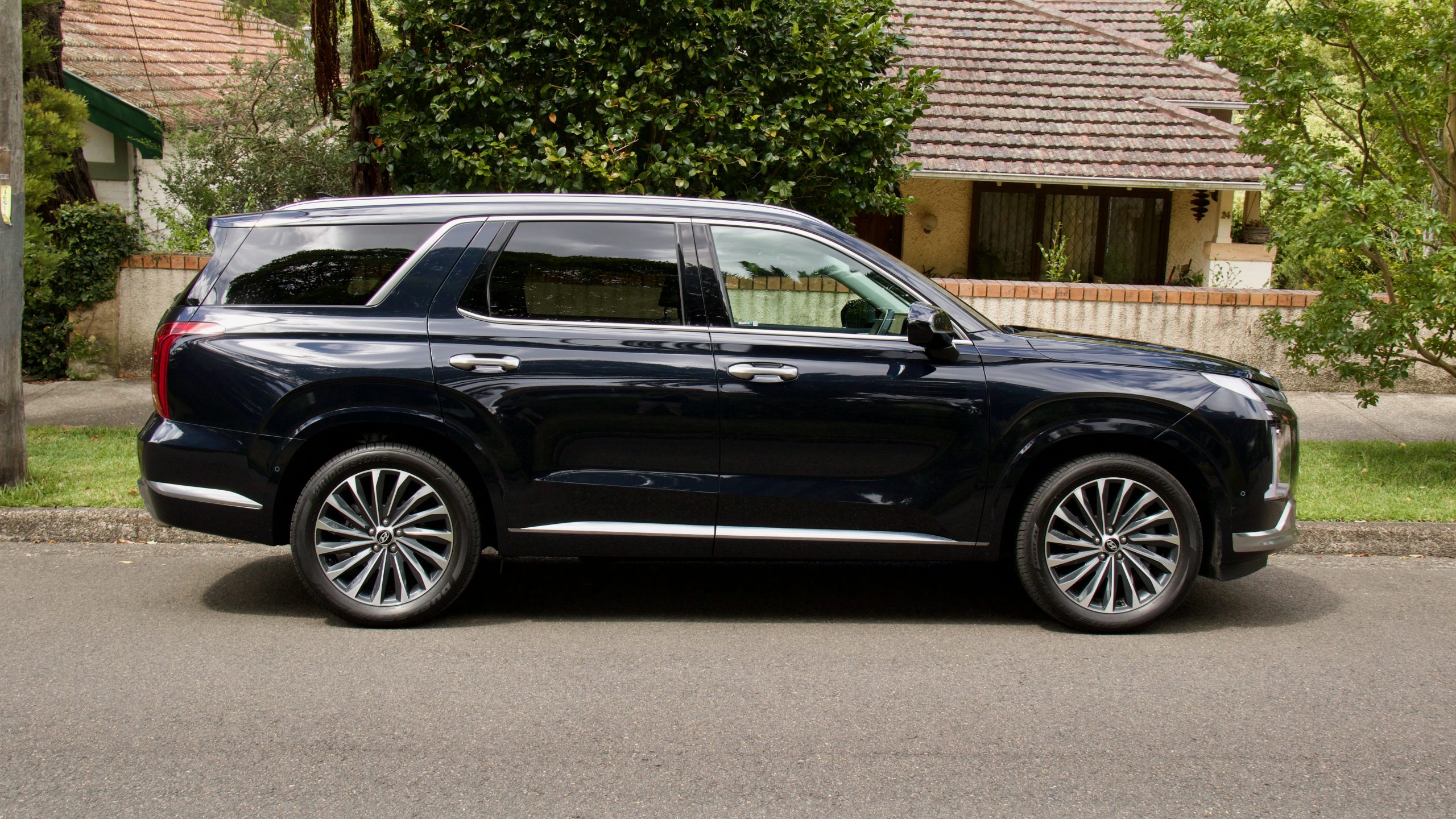

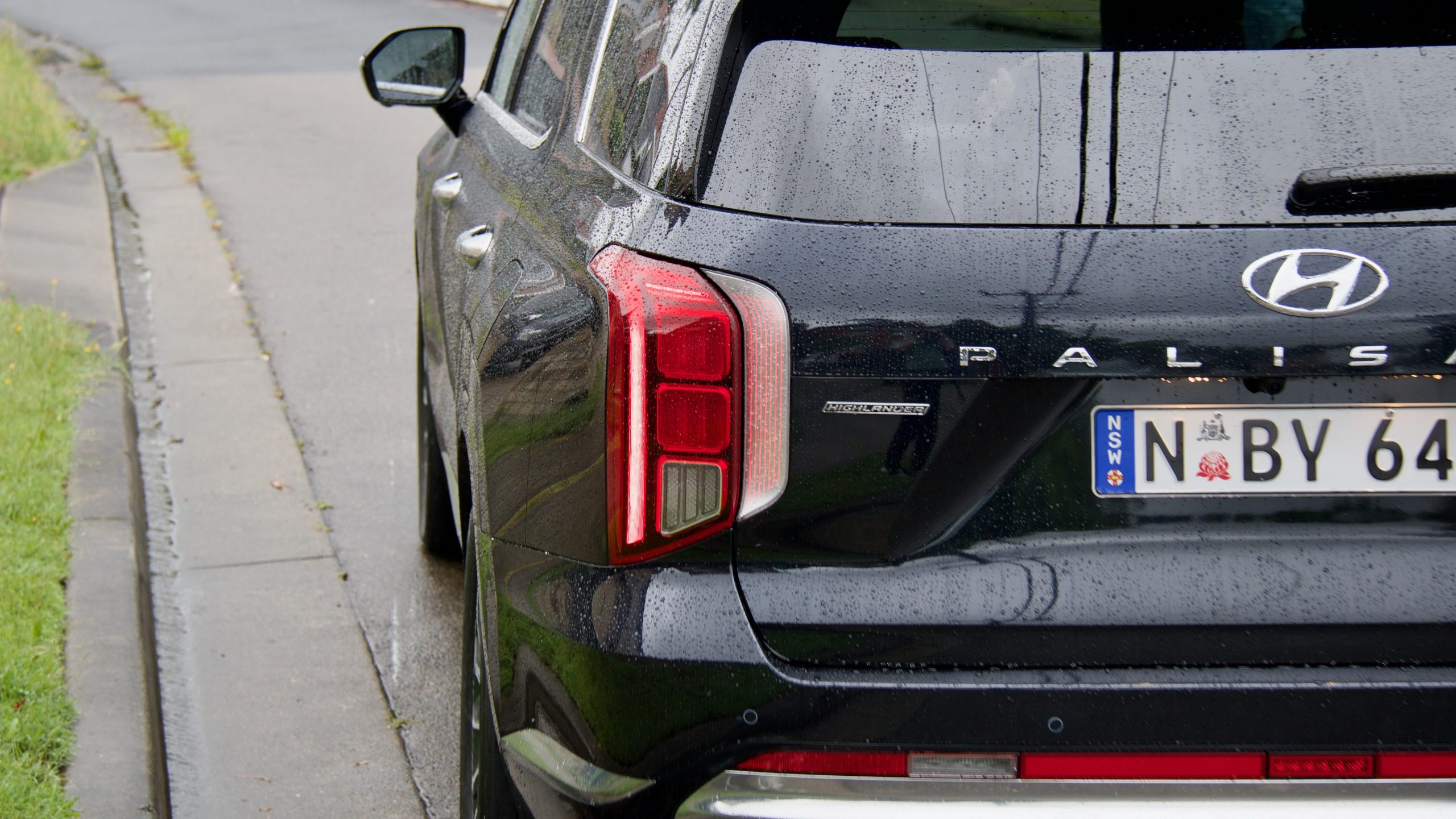
The Jeep Grand Cherokee L Night Eagle is priced at around $89,800 drive away and features an auxiliary battery, wireless Apple CarPlay and Android Auto, an additional six USB charging points and knee airbags for the driver and passenger, which are missing on the Palisade. However, the Hyundai does feature a significant number of features missing on the Grand Cherokee L Night Eagle, including dual sunroofs, Nappa leather upholstery, an additional four ways of powered adjustment for the driver’s seat, ventilation for the front seats, heated and ventilated rear outbound seats, a larger 12.3-inch touchscreen, a larger 12.3-inch digital instrument cluster, a premium sound system with an additional six speakers for a total of 12, auto high beam, ambient interior lighting, a 360-degree camera, blind-spot collision avoidance, rear cross traffic collision advance, parallel parking exit avoidance, a front-centre airbag, safe exit assist, remote parking functions from the key fob, a memory system for the driver’s seat, blind spot view monitor display, a head up display and a digital rear-view mirror.
Nissan prices the Pathfinder Ti-L at around $88,200 drive away and compared to the Palisade Highlander, features a larger 10.9-inch head up display, an electrically adjustable steering wheel, wireless Apple CarPlay and an extra speaker for the audio system. However, the Hyundai fights back with a number of features missing on the Pathfinder, including; an extra USB charging points, auto-folding mirrors, Nappa leather upholstery, an additional five ways of powered adjustment for the driver’s seat, ventilated second row outbound seats, a heated steering wheel, an automatic collision notification and SOS button, remote functions such as climate control, window open/close and door locking and unlocking through an app, blind spot view monitor display, rear cross traffic alert and collision avoidance, safe-exit assist, front cross traffic alert and collision avoidance, parallel parking exit collision advance and a bigger 12.3-inch touchscreen infotainment system.
Compared to the Pathfinder and Grand Cherokee L, the Palisade represents great value – it undercuts both in price while offering a significant amount of additional equipment. There isn’t really much equipment we think should be added to the Palisade, though we would like to see wireless Apple CarPlay and Android Auto, front knee airbags and Matrix headlights.
Performance & Economy: 8.5/10
Two engines are offered across the Palisade range: a petrol V6 and the turbo diesel engine fitted to our test car. Featuring a displacement of 2.2-litres, the diesel unit produces 147kW of power at 3,800rpm, and 440Nm of torque between 1,750rpm and 2,750rpm. Power is sent to all four wheels and while the power developed doesn’t sound amazing on paper, the significant amount of torque that’s developed lower in the rev range is what makes the difference. It’s no speed demon, with a 0-100km/h sprint time of around 9.5 seconds, but it’s got more than enough grunt for its intended purpose.


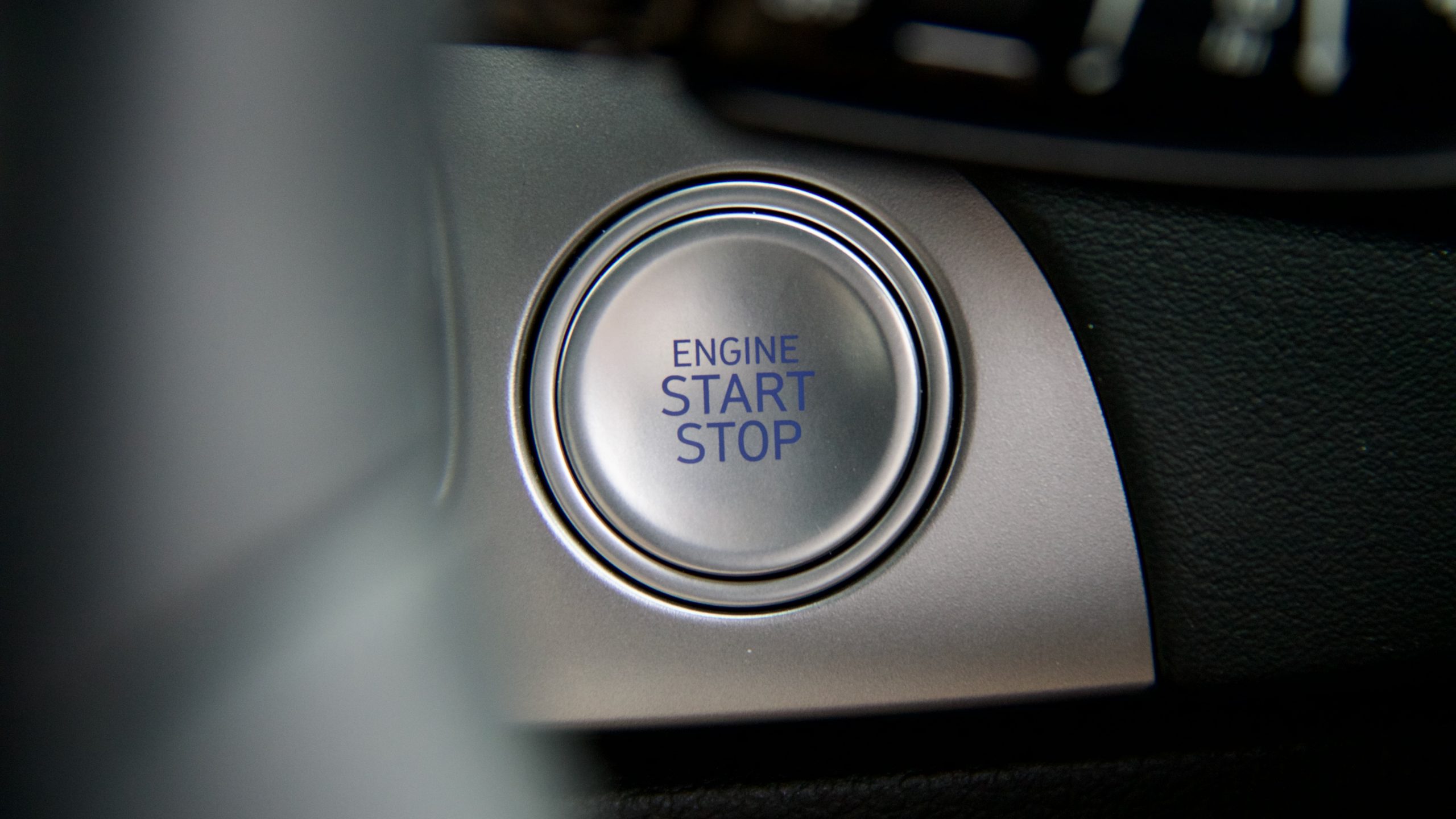
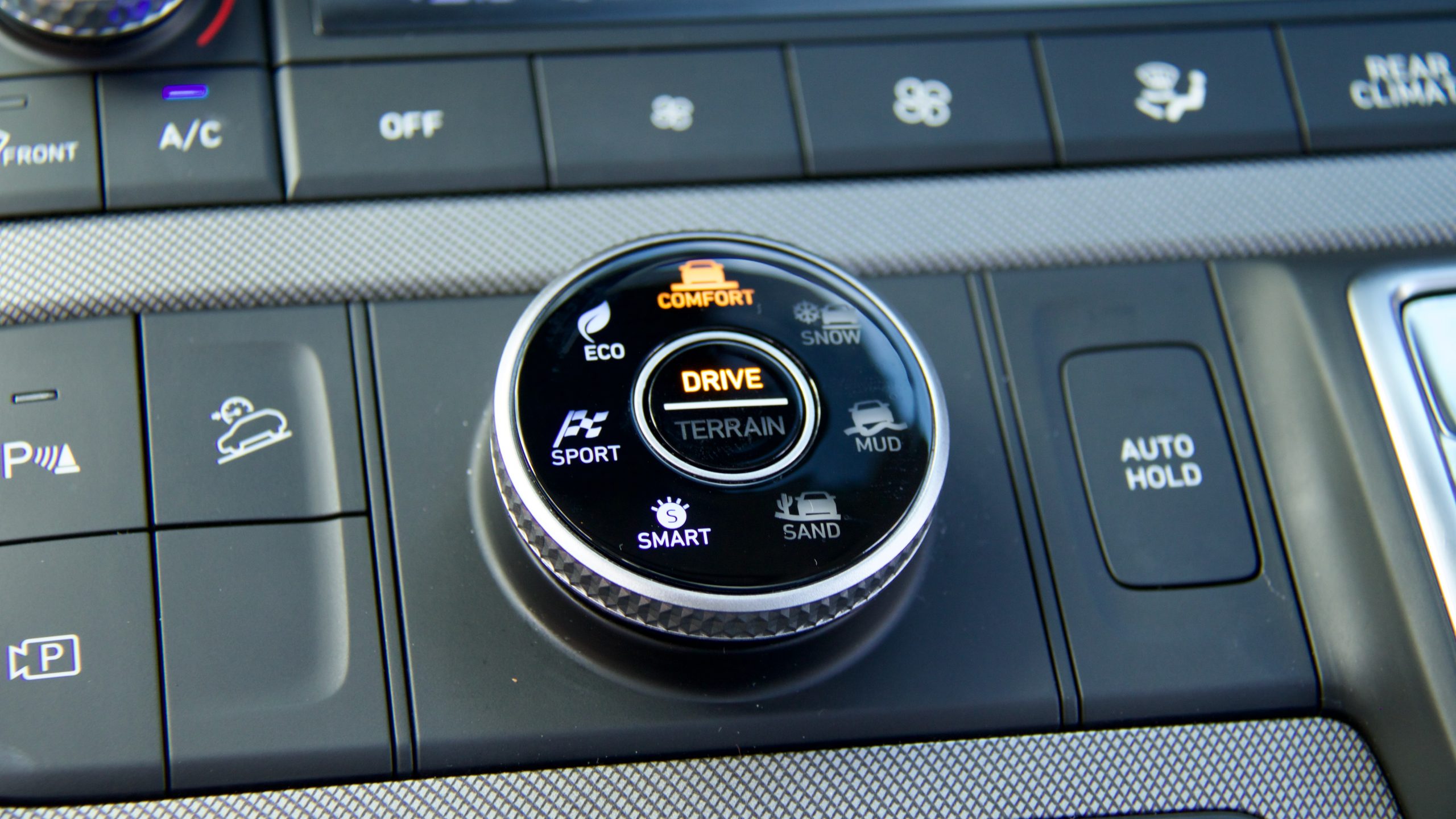
The powertrain feels quite at home in suburbia, getting up to speed with ease at city speeds, with the torque delivery giving the driver the amount of pep required. There is a bit of delay courtesy of turbo lag from a standstill, but we don’t think many drivers will be particularly bothered. The Palisade also takes highway driving in its stride, still having enough oomph to get up to highway speeds and for overtaking duties, even when carrying extra passengers. Refinement is also pretty good – the startup note and idle noise alert the driver that they’re in a diesel, but otherwise engine noise suppressed and engine vibration are near non-existent.
Sending power to all four wheels is a conventional eight-speed torque converter transmission, which i san excellent unit. It pairs well with the engine, and is always remarkably smooth and refined, it doesn’t get confused and gear changes are quick and decisive. Across a week of mixed driving including highway, suburban and start stop traffic, we achieved an average fuel usage of 8.0L/100km – just 0.7L/100km off Hyundai’s claim of 7.3L/100km, which isn’t ‘hybrid low’ fuel usage but still impressive for a large SUV – on our last test with a V6 Palisade we averaged a thirsty 14.3L/100km. With a full 71-litre tank and achieving the fuel economy we did, a range of around 870kms should be possible.
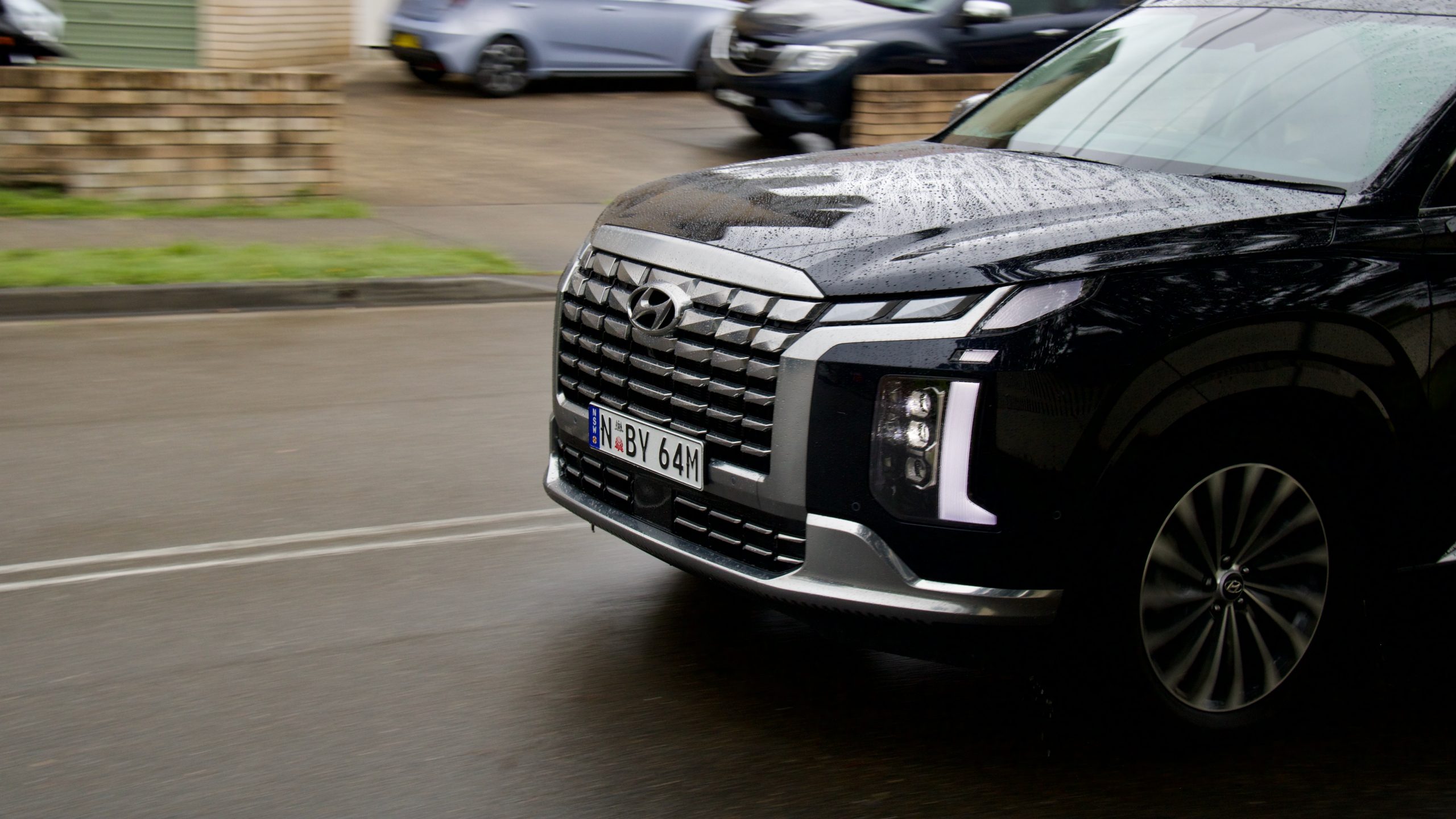
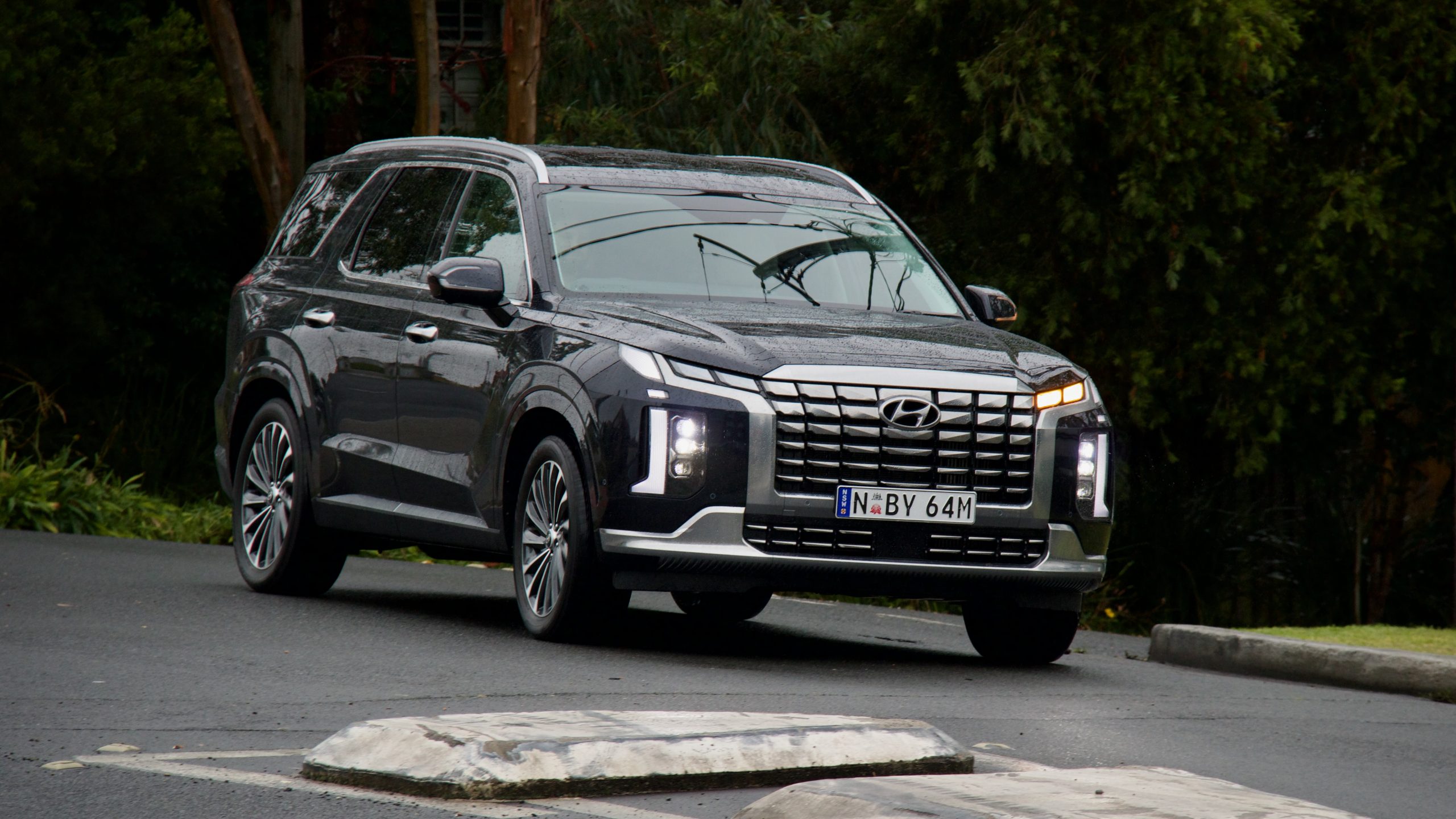

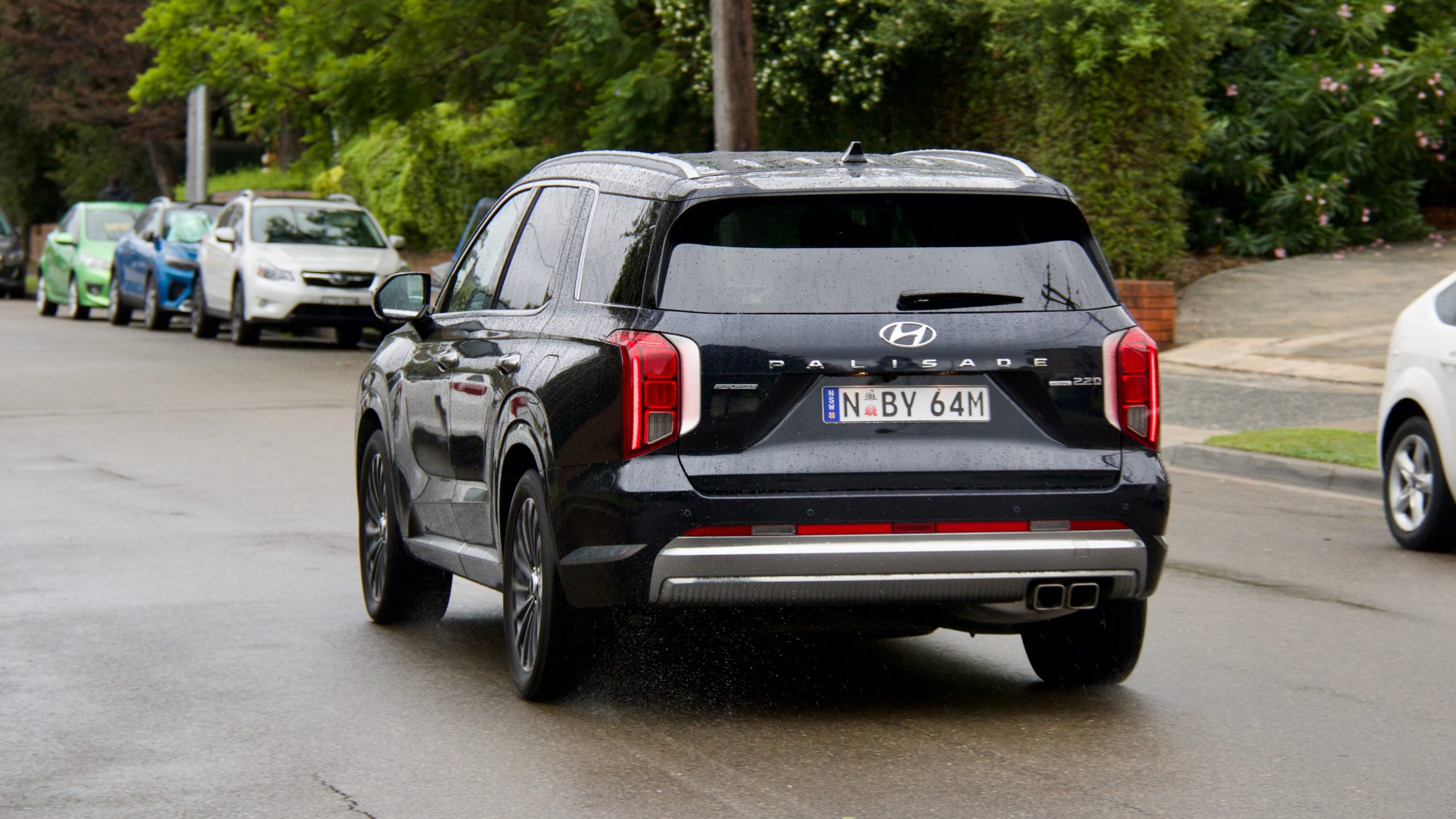
We definitely think the AWD diesel drivetrain is the one to pick over the V6 – while it commands a $4,200 premium, the lower fuel usage and benefits of the AWD system, which isn’t available for the V6 model, make it a very worthwhile spend.
Ride & Handling: 9/10
The Palisade handles like a smaller car than it actually is, a testament to Hyundai’s ride/handling balance expertise. Hyundai’s large SUV feels pretty well planted on the road at most times, with body roll kept at bay almost all the time – it only rears its head when taking corners harder than almost any Palisade driver is going to. The steering is also direct and well weighted, with a good feeling of connection to the road. While the driver is aware of the heft of the car they’re driving around, the steering is light enough that manoeuvring around tight places is much easier than you’d expect.
The combination of the power delivery and AWD system makes the Palisade such a better car than the 2WD only V6 – we felt the V6 had too much power for a 2WD setup, with wheel spin being hard to avoid. By comparison, the diesel AWD felt far more sorted, and the AWD system very effective at preventing wheel-spin and keeping good traction even in the wet.
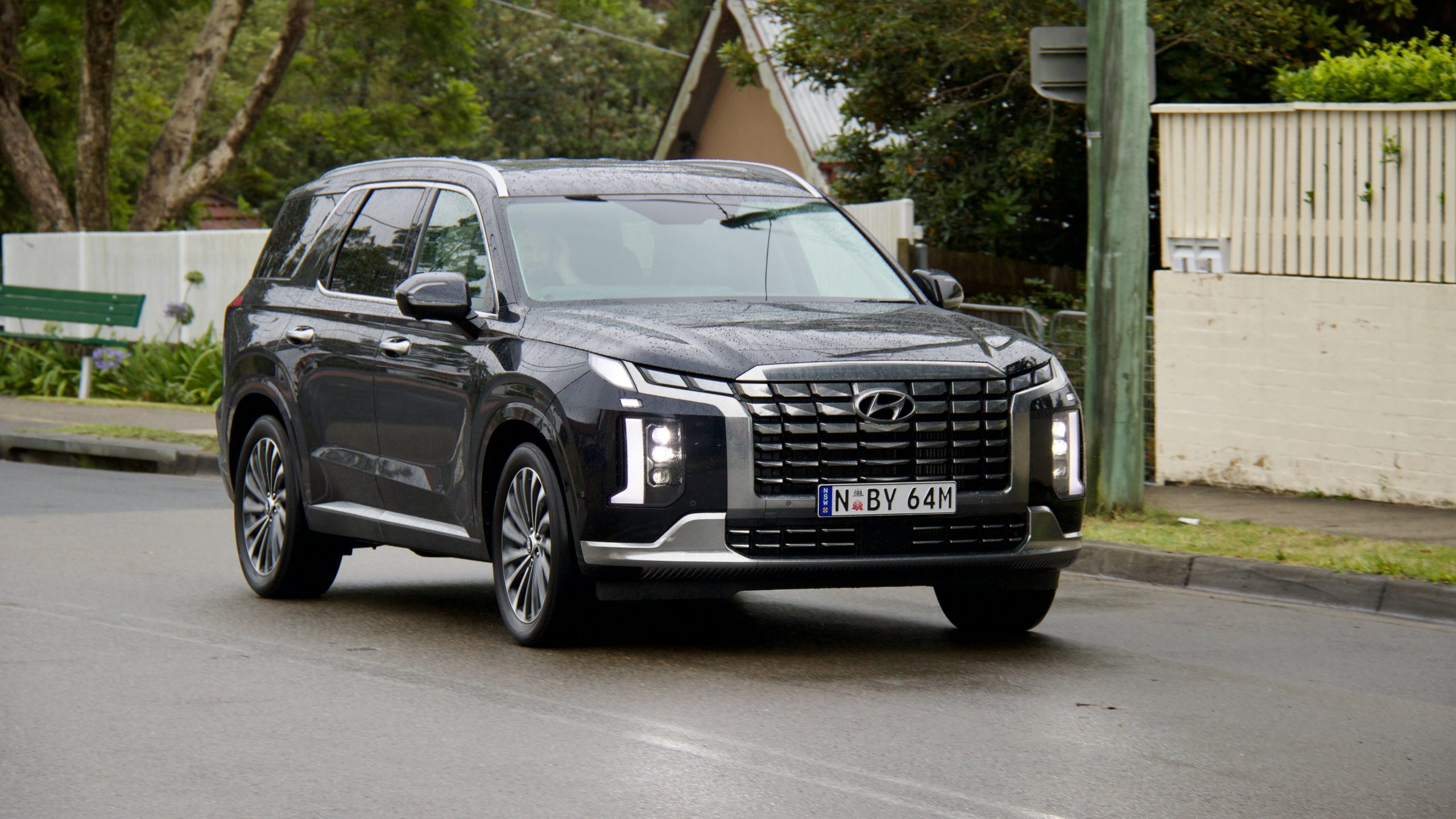
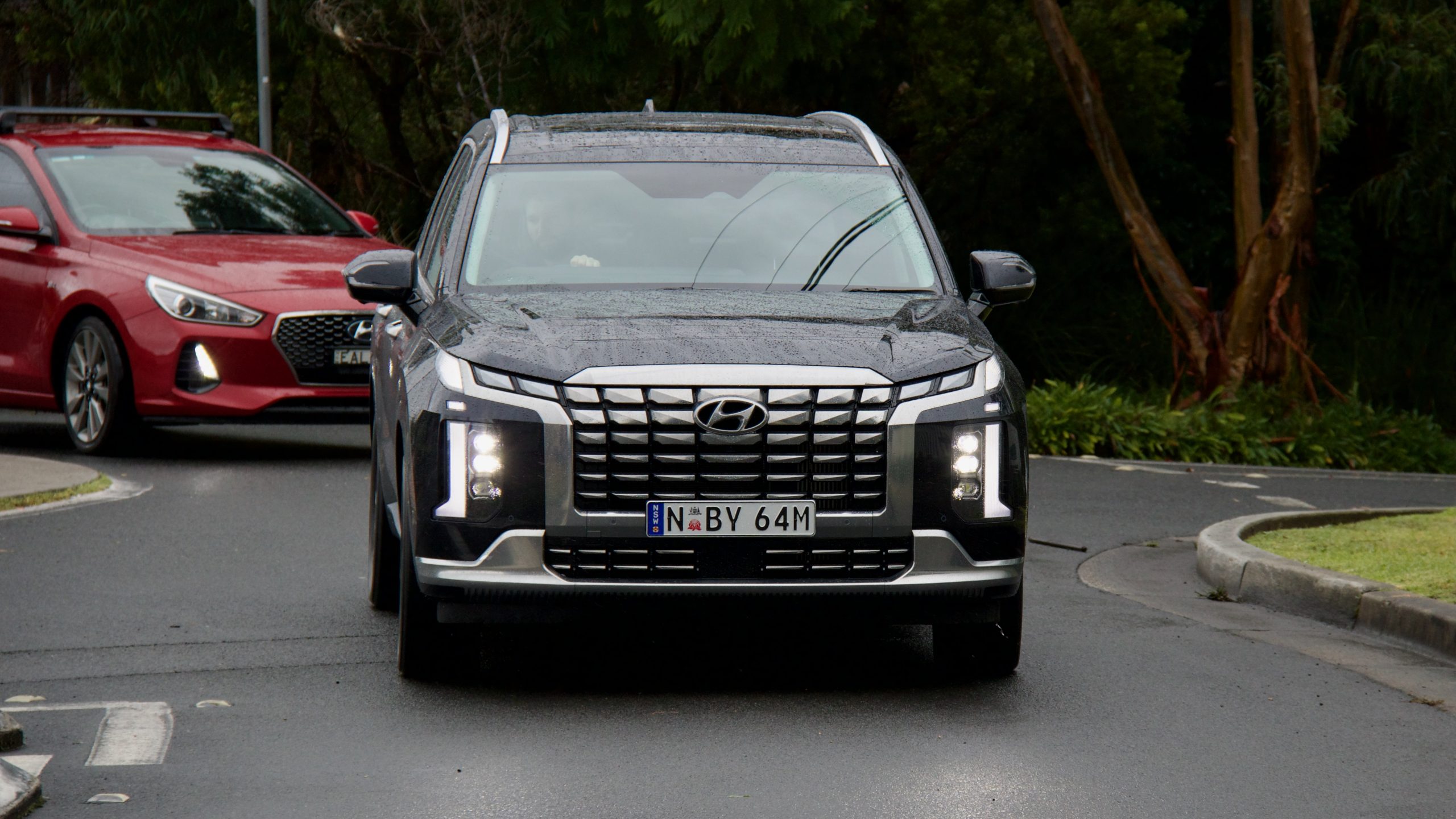

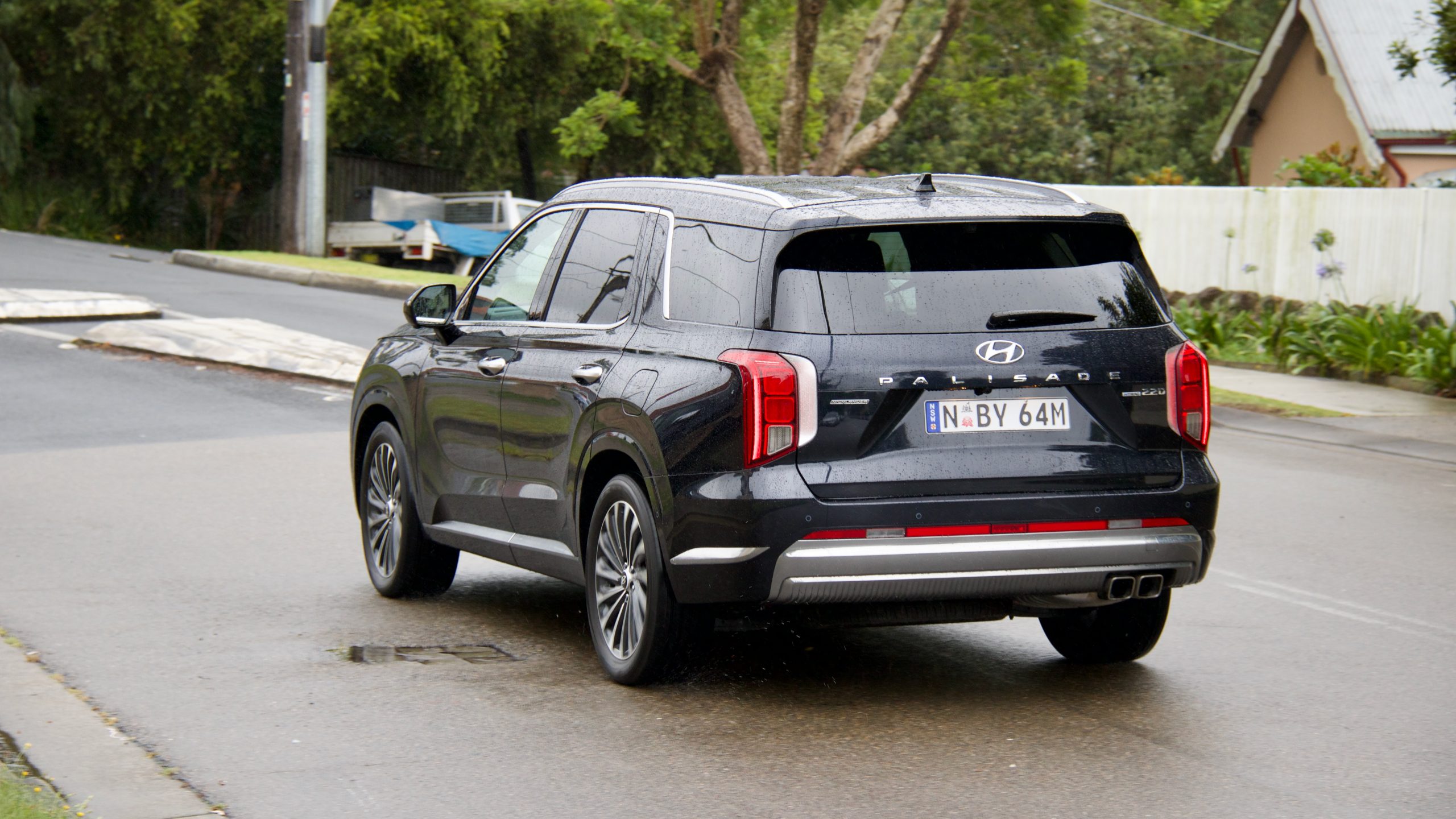
The Palisade has a sublime ride quality – the suspension is tuned very well for Australian roads, soaking up all the imperfections our subpar road can throw at it, delivering a relaxed atmosphere – impressive given the massive 20 inch alloys the Palisade rides on. Noise suppression is also excellent, with road and wind noise kept to a minimum.
Visibility all around the car is fairly good with a large rear window, rear quarter windows and good sized side mirrors. In addition digital aids including excellent 360 degree view camera and reversing camera help for manoeuvring and parking. The digital rear-view mirror is great for when the boot is loaded up, or when towing a bike rack that obscures rear visibility.

What’s less impressive is the new road-sign recognition system which was introduced as apart of the facelift – audible and visual warnings on the infotainment system appear the moment you creep a kilometre over the speed limit, or as often happens a road sign is incorrectly detected (like on the back of a bus, an offramp or a school zone outside school zone time, for example). This would all be fine if the system could be turned off permanently, but the system re-enables itself every time the car is switched back on. Plus when the system is manually switched off, the driver loses the road speed display in the instrument cluster. For a car that’s so serene, the frequent dinging really detracts from the experience, and we’d love if Hyundai made it made it possible to disable the audible speed warning permanently.
Interior & Practicality: 9.0/10
The interior of the Palisade is a modern and airy space, filled with high quality materials, making it a pleasure to be in – it’s also very capacious with plenty of room in just about every dimension. There are lashings of soft touch surfaces throughout the cabin and for the most part, hard plastics banished to surfaces below the dashboard, which aren’t touched as often. Switchgear throughout the cabin is also dampened well and feels fantastic to use, we’re happy to see that Hyundai replaced the indicator and light stalks with its ‘new generation’ stalks, which feel much nicer to use. The soft touch materials and quality switchgear definitely creates a great sense of ambience.

A mixture of light ‘wooden’ panels and faux aluminium inserts combined with the navy upper dash creates visual interest and breaks the space up well. The dash features a ‘bridge’ leading up from the centre console to the dash, with well laid out controls. We love that there are physical air-conditioning controls, as they’re just easier to use than touchscreen ones. We don’t love the transmission selection buttons – it’s near impossible to use without looking at, and performing manoeuvres involving changing direction becomes clumsy. While the push button selector is space saving, a traditional gear selection stick would be easier to use. Overall though, the interior controls are fairly straightforward to use. Storage throughout the cabin is excellent, with a generous glovebox, large centre console storage, a coverable sliding centre console section which has a phone storage/wireless charging spot and cupholders, good sized door bins and a cavernous section under the centre console.
The seats throughout the cabin are finished in a supple Nappa leather, which feels great to the touch and comfortable to sit in. The front seats themselves are supportive with good bolstering and plenty of adjustment – 14 ways of powered adjustment make finding a comfortable driving position easy. The seat heating and ventilation further boost the comfort of the seats, all year round. There’s plenty of headroom up front, even with the dual sunroof.

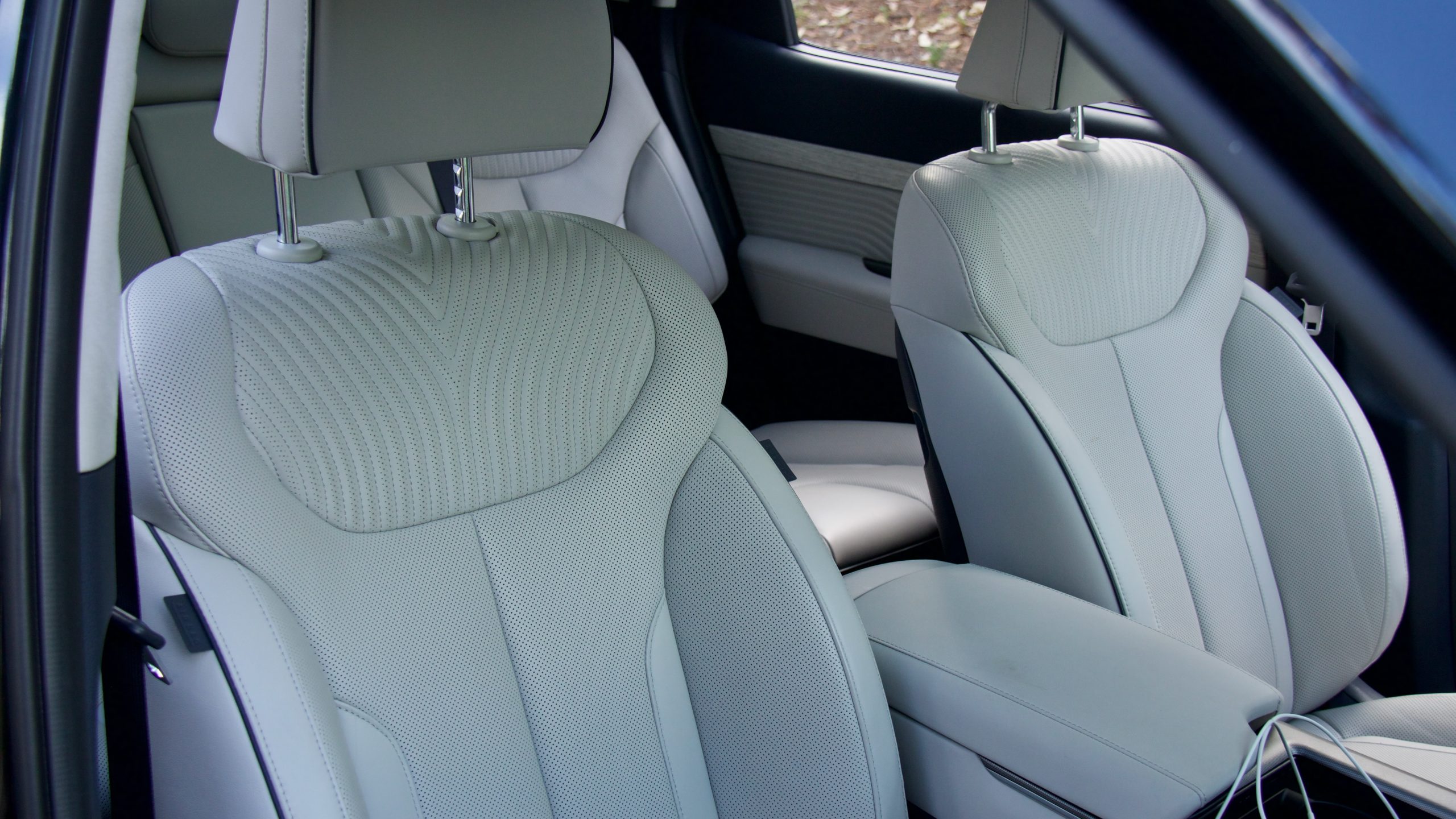
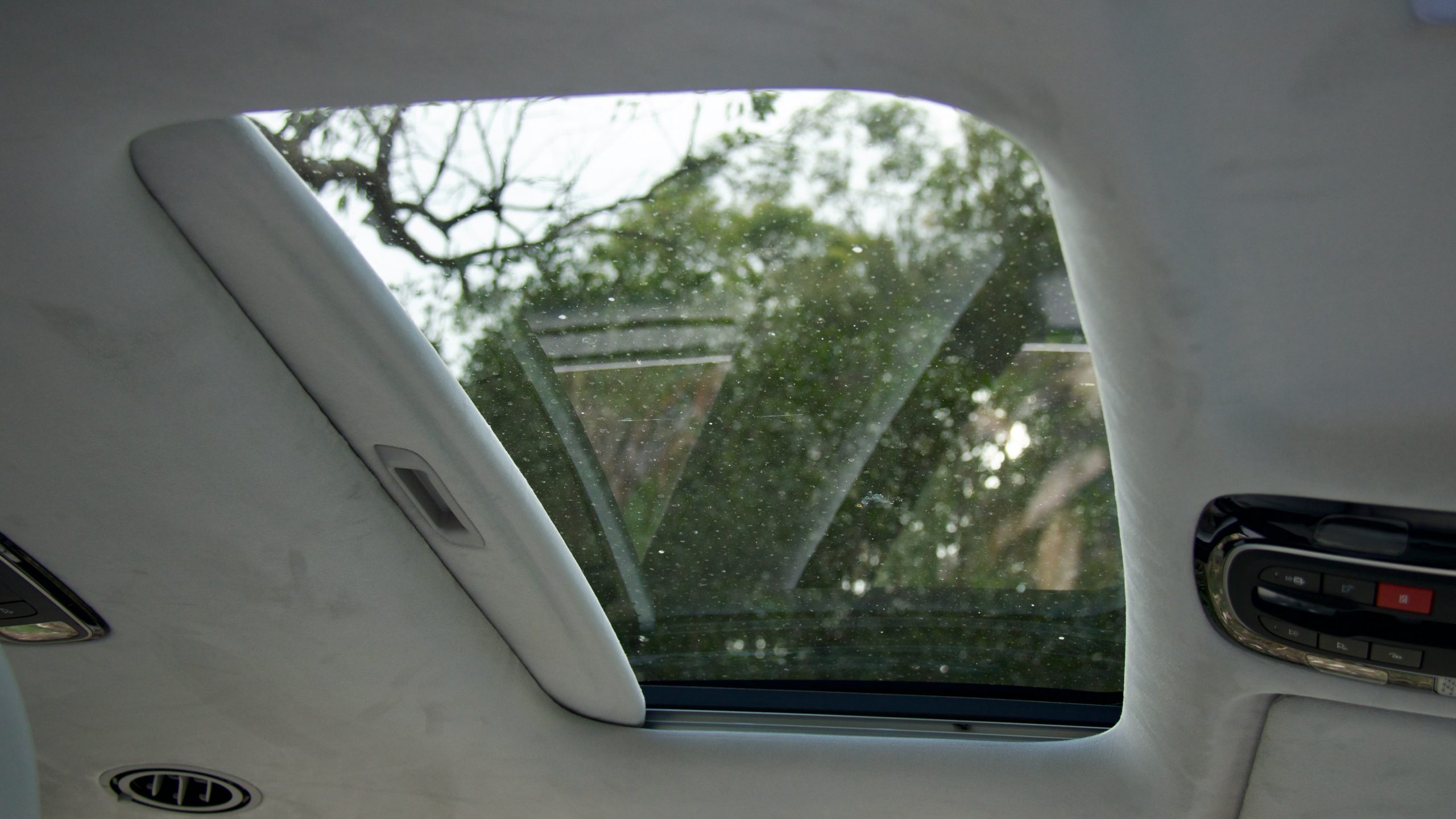

Ahead of the driver is a 12.3-inch digital instrument cluster, which is crisp and has a pleasingly high resolution. The graphics are slick and well designed, however isn’t very customisable in terms of what the driver can select to display – which is a disappointment given customisability is, in our view, one of the main reasons for having a fully digital cluster. The 10.0-inch head-up display is also helpful – it’s also clear and bright. The driver and passenger have a choice of three different USB points and a wireless charger to take care of their charging needs.
Infotainment in the Palisade is taken care of by an expansive 12.3-inch touchscreen. The screen itself is, in usual Hyundai style, a joy to use. The screen itself is crisp and has a great refresh rate making animations and transitions smooth. The software powering the screen is intuitive and very slick. Smartphone mirroring is taken care of by wired Apple CarPlay and Android Auto, and there’s also DAB+/FM/AM radio plus satellite navigation. The Infinity audio system sounds good for the most part, rendering sounds well, though at times the bass is a bit lacking. As mentioned previously, the 360-degree and reversing cameras have fantastic quality and the large screen displays them well.
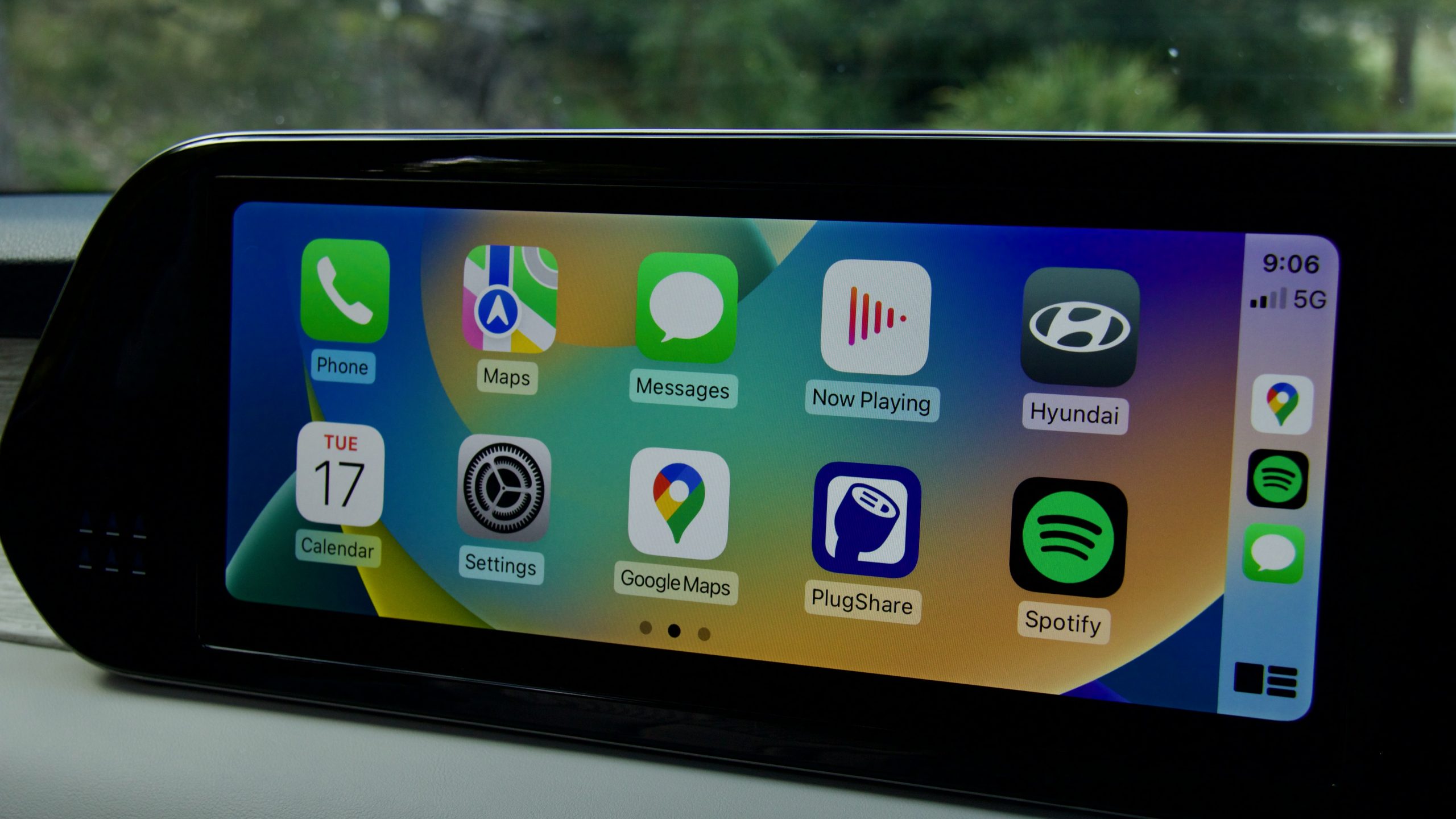

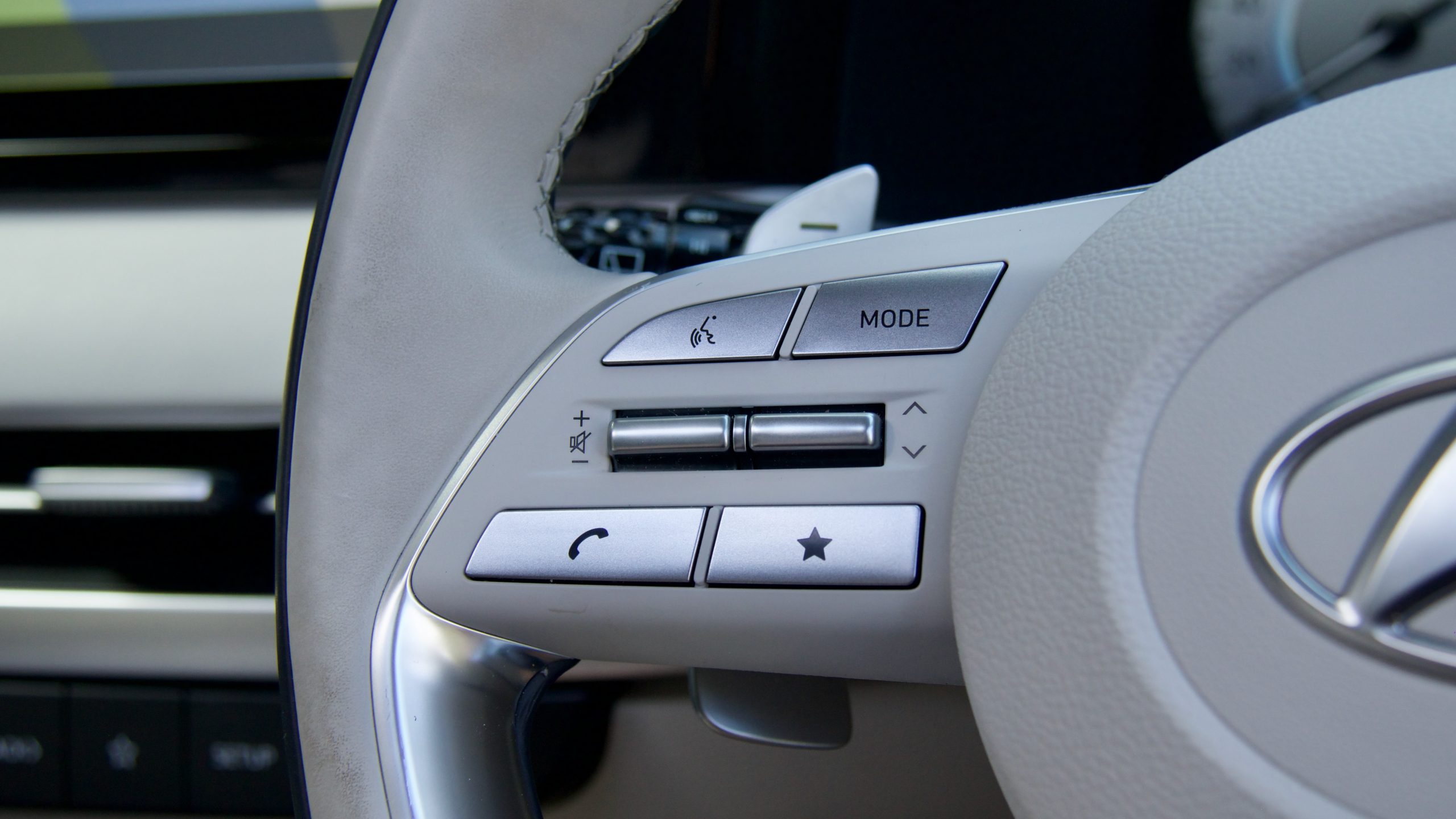
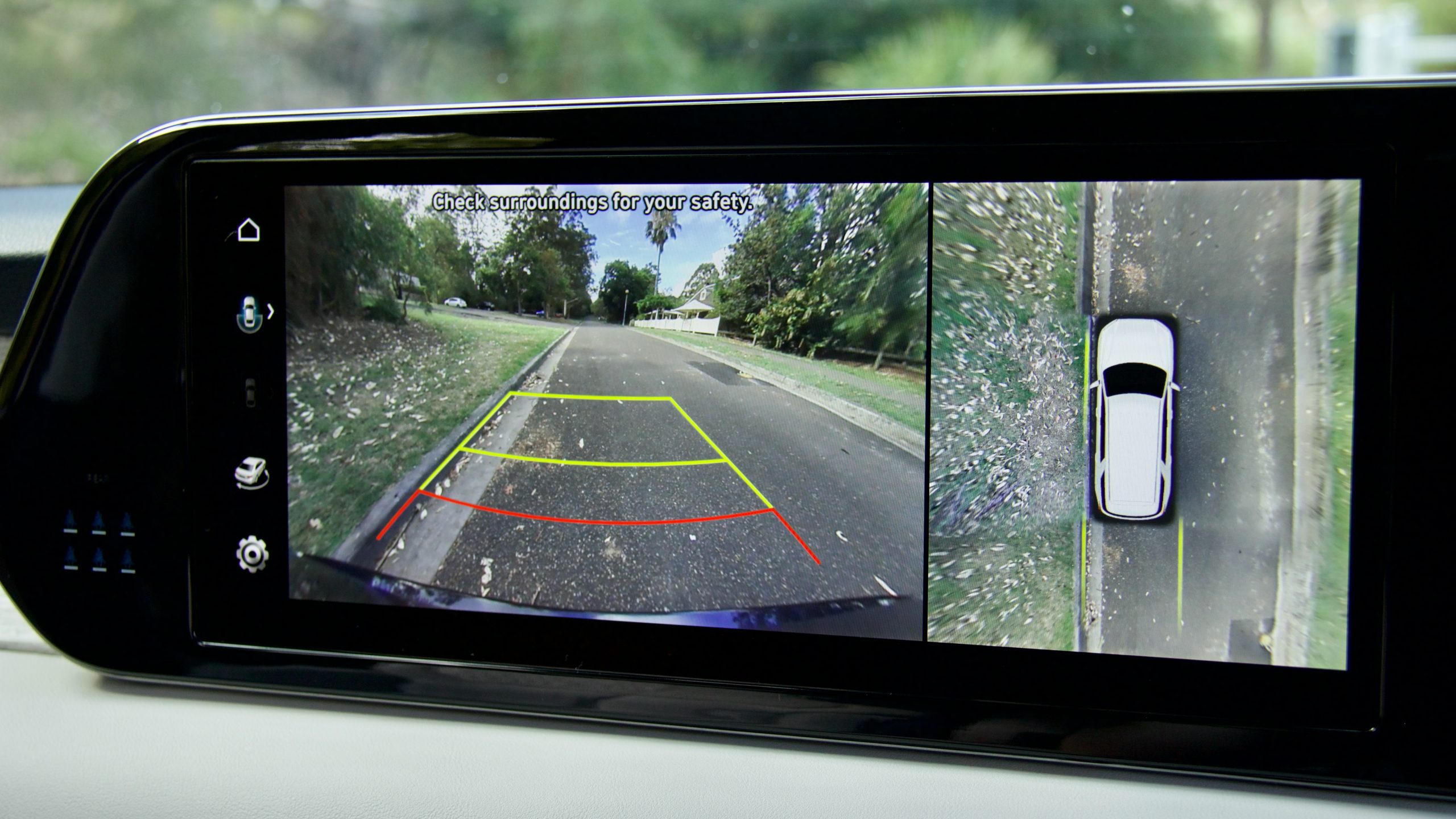
The second row of the Palisade is a nice place to be. The outbound seats are wide, and have plenty of head, knee and foot room and the seats themselves are very comfortable, with surprisingly good support and bolstering for a second row. The middle seat, while not as wide as the two seats either side, is still fairly well proportioned and has pretty good leg room due to the lack of transmission tunnel. Three adults can sit across the back in comfort, though taller adults might find the middle seat gets a bit squishy on longer trips.
The Palisade is big on creature comforts for second row occupants, including two USB charging points, a separate climate zone with dedicated controls, heated and ventilated seats (for the two outbound seats – the middle occupant misses out), map pockets, door mounted drink holders and roof mounted air vents. The second panel of the sunroof also contributes to making the middle row an airy and pleasant place to be.

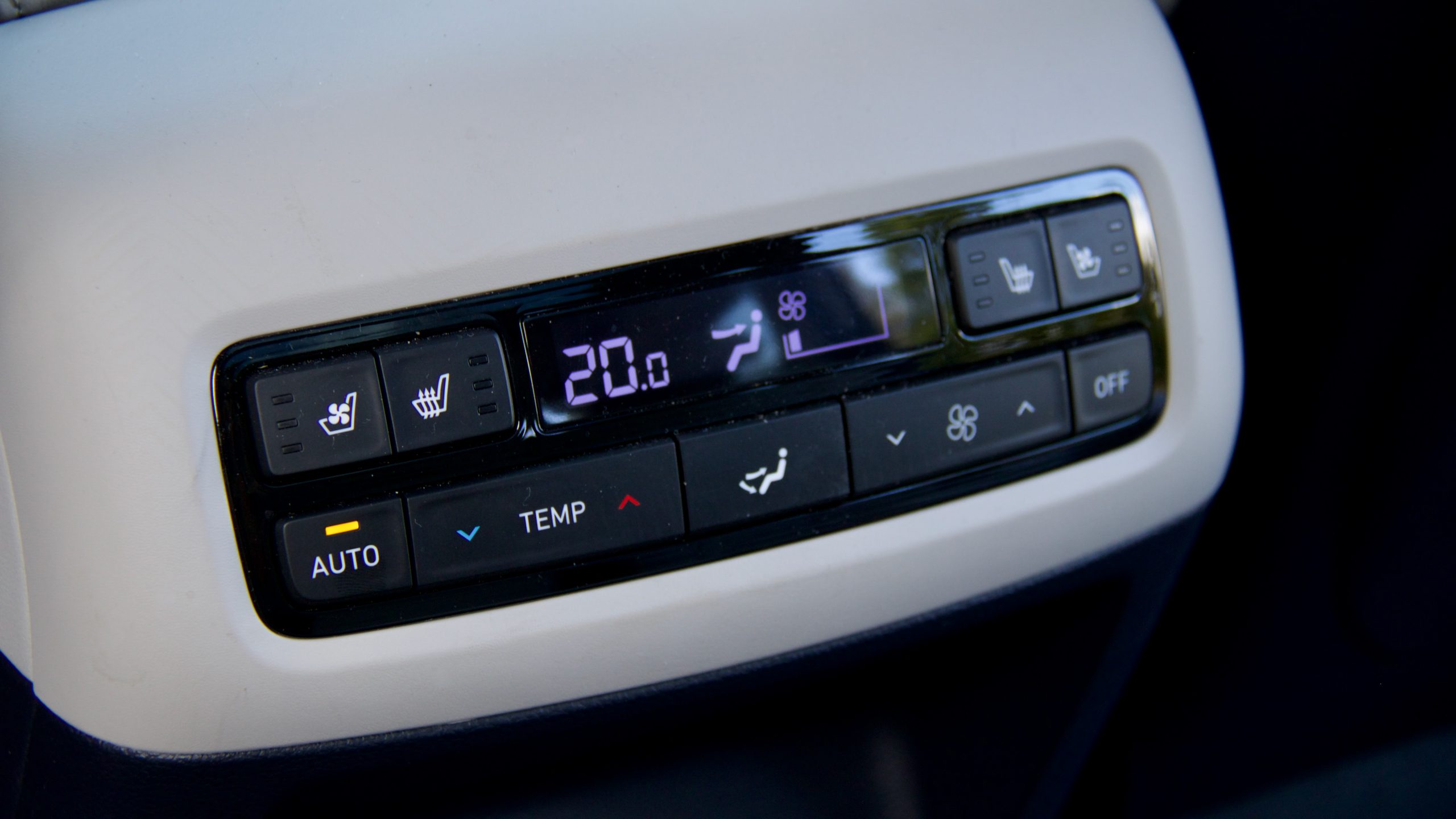


Moving even further back into the third row, reveals a more spacious area than most large SUVs and one that’s actually capable of carrying adults somewhat in comfort. Headroom and leg room, especially with the middle row moved forward a bit is more than acceptable for even taller adults for shorter and even mid length trips – the lack of drop under the seat does mean adults will have their knees up higher, but its again better than most of the Palisade’s competitors. Getting three adults across the back row isn’t something we’d suggest though, unless it was absently necessary – there simply isn’t enough room for it to be comfortable. Three children or smaller teens, however would be more than ok.
Access and egress to the third row is better than the class average, with wide opening doors and a good gap to climb through – we also liked the one touch powered access button which is simpler than other cars we’ve texted with more complex controls. Third row amenities include two usb charging points, roof mounted vents and drink holders for the outbound seats. Both the 2nd and 3rd rows have 60:30 folding abilities which open up the space for flexible packing and seating arrangements.
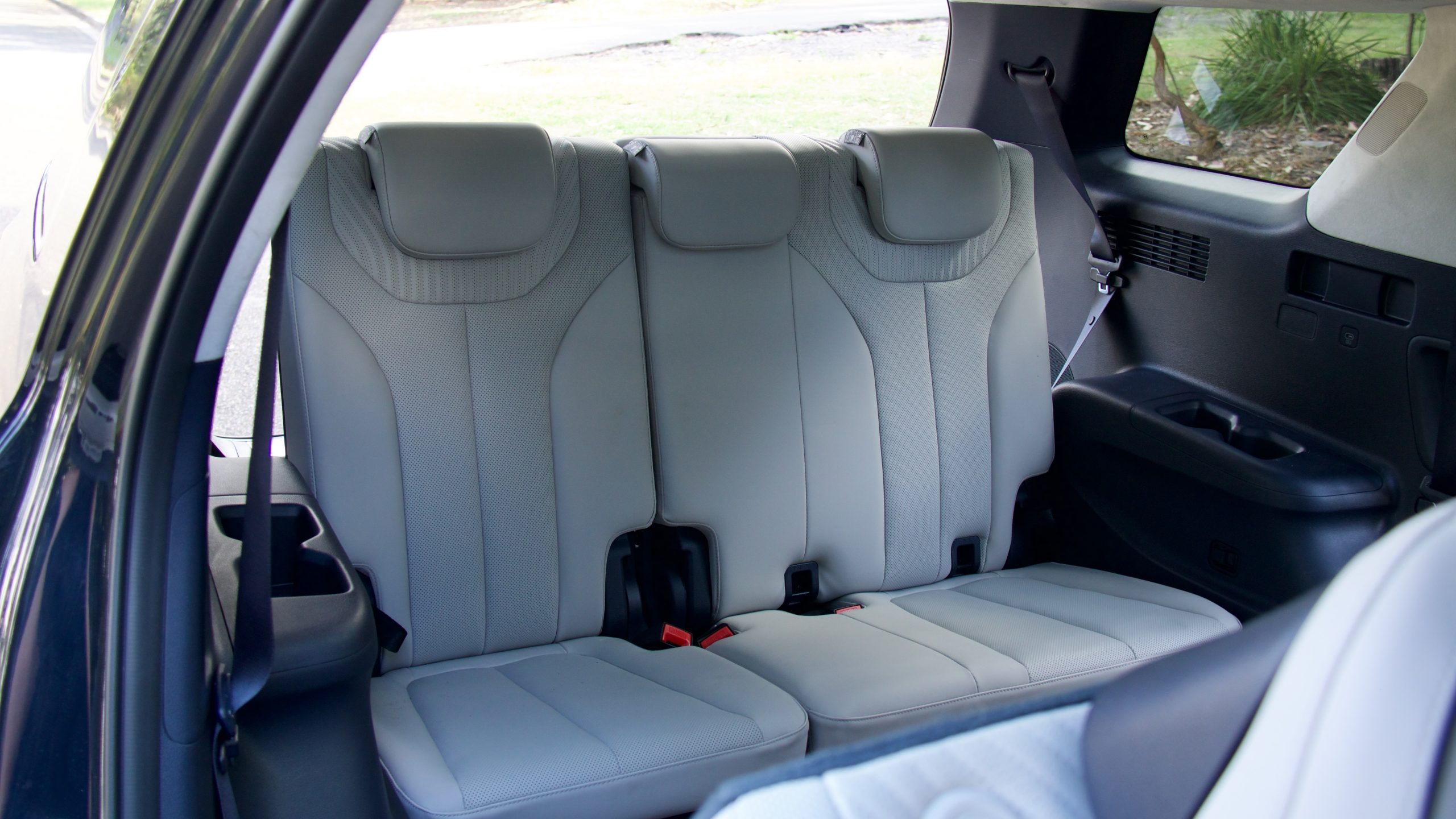
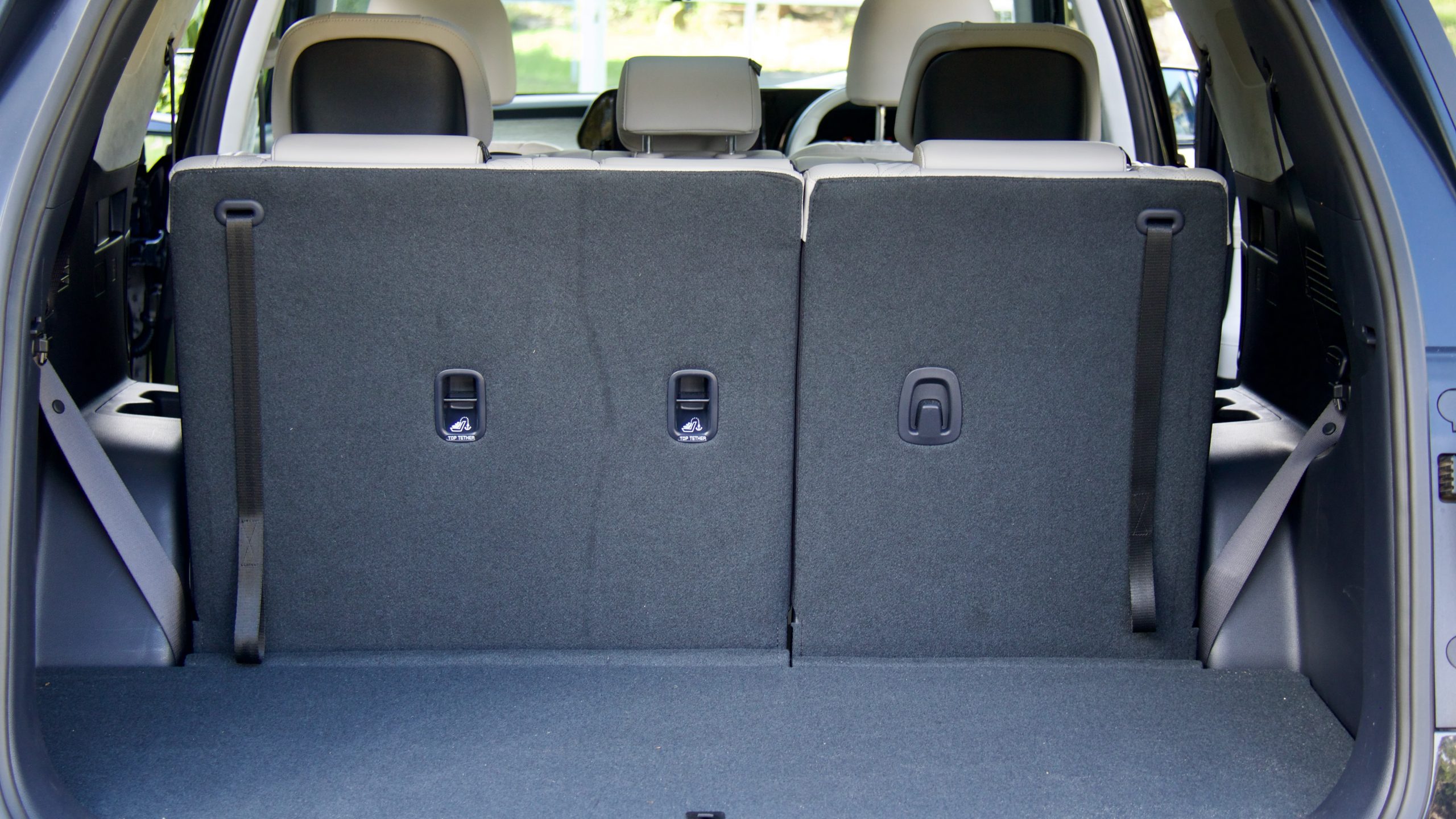
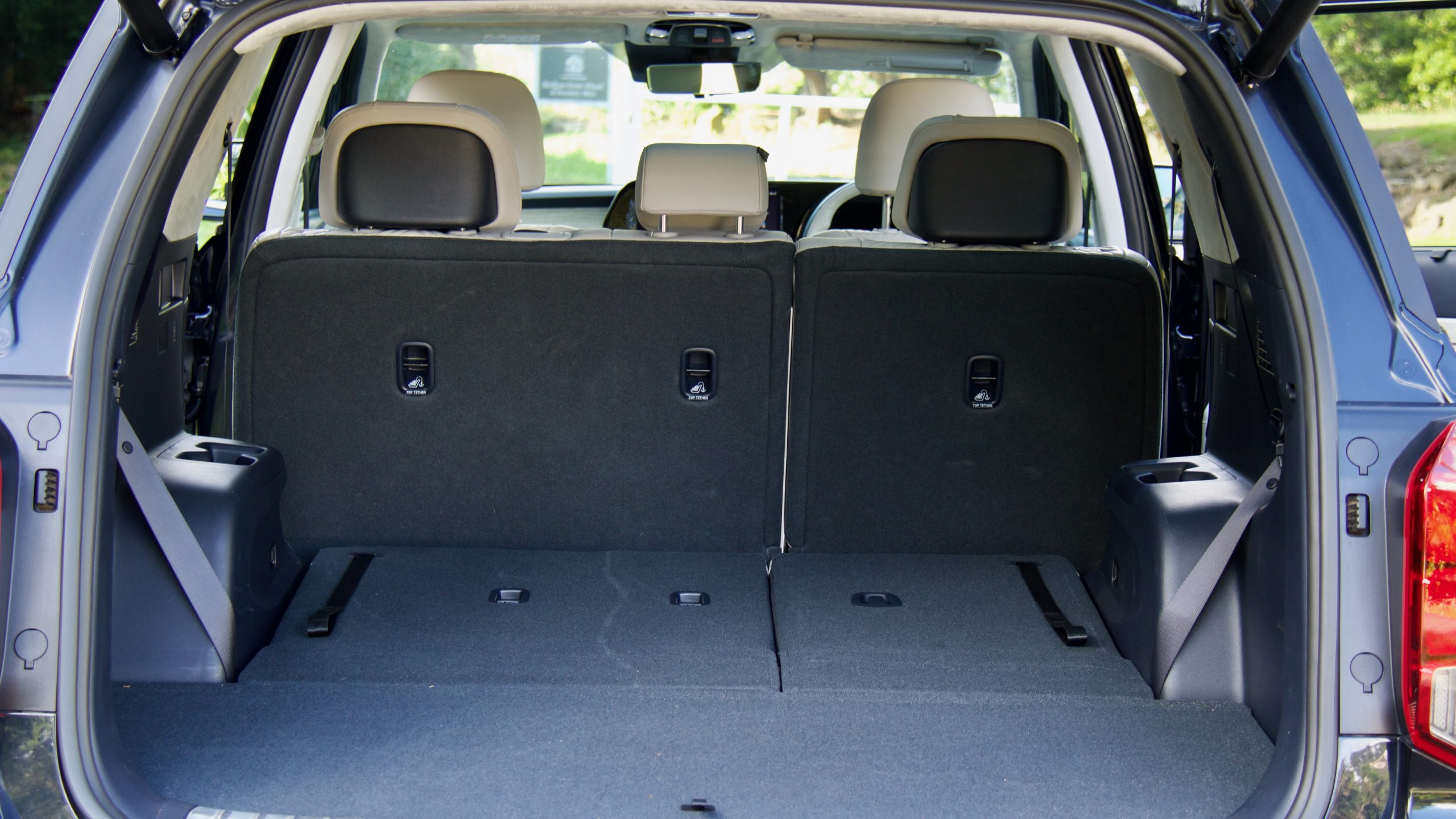

Opening the rear powered tailgate bares a large boot, which measures a respectable 704-litres with the 3rd row folded, and a usable 311L with the 3rd row in use. Hyundai doesn’t give an offical figure for the boot capacity when the second and third rows are both folded, but it’s a substantial and useable space. The Palisade compares well to the Pathfinder, which has 554L of space with the 3rd row folded and 205L with the 3rd row in use, though the Grand Cherokee L manages to trump both with a massive 1,328L of space with the third row folded and 487L with the third row occupied. Folding the middle row in the Palisade is a breeze with a single touch of the powered seat folding buttons, which is a nice touch. There is also additional under floor storage, hooks to tie down cargo and something which we love to see in a big family car: a full-sized alloy spare wheel under the boot floor.
Service & Warranty: 9/10
Hyundai gives the Palisade a five year/unlimited kilometre warranty, which is matched by Nissan with the Pathfinder – where as Jeep offers a lesser five-year/100,000km warranty for the Grand Cherokee L. The Palisade comes with 12 months of roadside assistance, which is extended an extra 12 months for each scheduled service carried out at a Hyundai dealership – this continues for the lifetime of the car – and Jeep offers the same program. The Palisade and Grand Cherokee L best the Pathfinder, which has five-years/unlimited kilometres of roadside assist included.

The Palisade benefits from Hyundai’s capped price servicing program, with service intervals of 12 months/15,000kms (which ever comes first). Capped price servicing for the Palisade (impressively) lasts for the lifetime of the vehicle. The first five services/five years of servicing for the Palisade comes to a total of $2445 ($489 per service). The Jeep Grand Cherokee L undercuts the Palisade in the total cost for the first five years of servicing, costing a lower $1995 ($399 per service). The Nissan Pathfinder is more expensive costing $2445 to service over the same period – and the 6th service costs a whopping $1625 by itself. The Pathfinder has the same 12 months/15,000kms service intervals, but the Grand Cherokee L has shorter 12 month/12,000km intervals.
The 2023 Hyundai Palisade Highlander Diesel DiscoverAuto Rating: 8.9/10
We finished our week with the 2023 Hyundai Palisade Highlander diesel thoroughly impressed with how capable it is across the board. While it is hard to escape the sheer size of the Palisade, Hyundai’s ride/handling prowess makes it feel smaller than it is, making it, by SUV standards, a component handler. The drivetrain is also great and fairly efficient, and the pricing is on point for the segment, with plenty of standard equipment. The Palisade’s interior is a lovely place to be in, filled with technology and premium design.
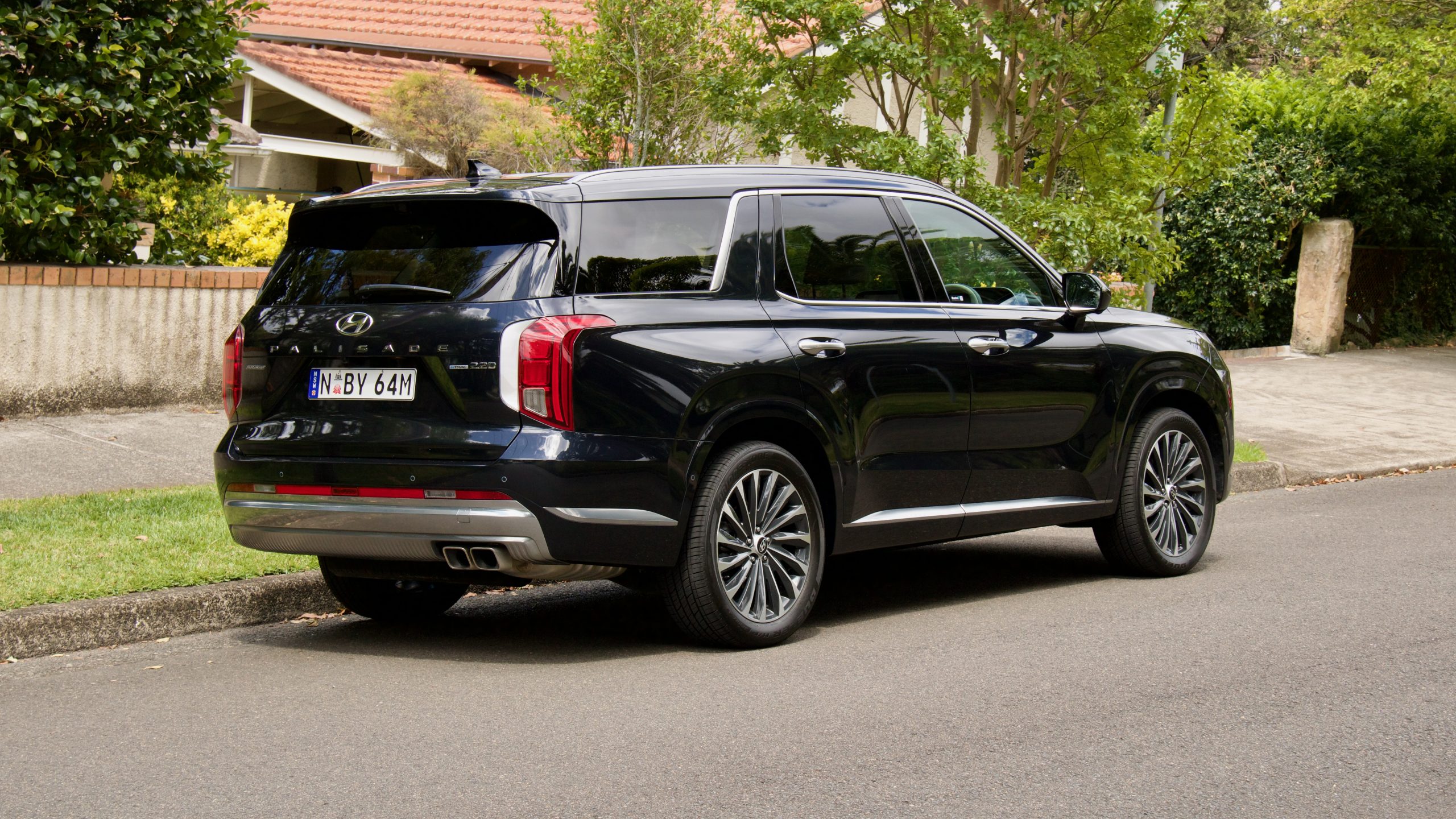
The Palisade isn’t perfect though, there are some niggles like the borderline insane implementation of road sign recognition, the push button transmission buttons and the lack of customisation for the instrument cluster. We do think while not too expensive compared to the direct competition, servicing is still pretty expensive. We do admit though, trying to find flaws and faults in the Palisade isn’t easy. Families looking for a large 7 or 8 seater SUV, that they won’t take off roading, should put the Palisade at the top of their comparison list – especially the Diesel AWD variant as we tested.
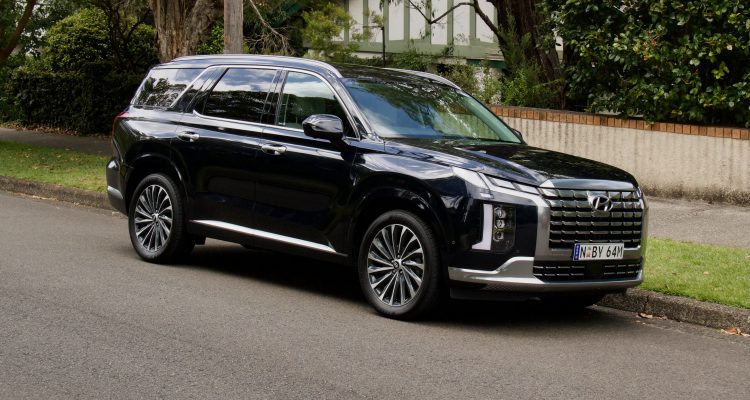
Leave a Reply